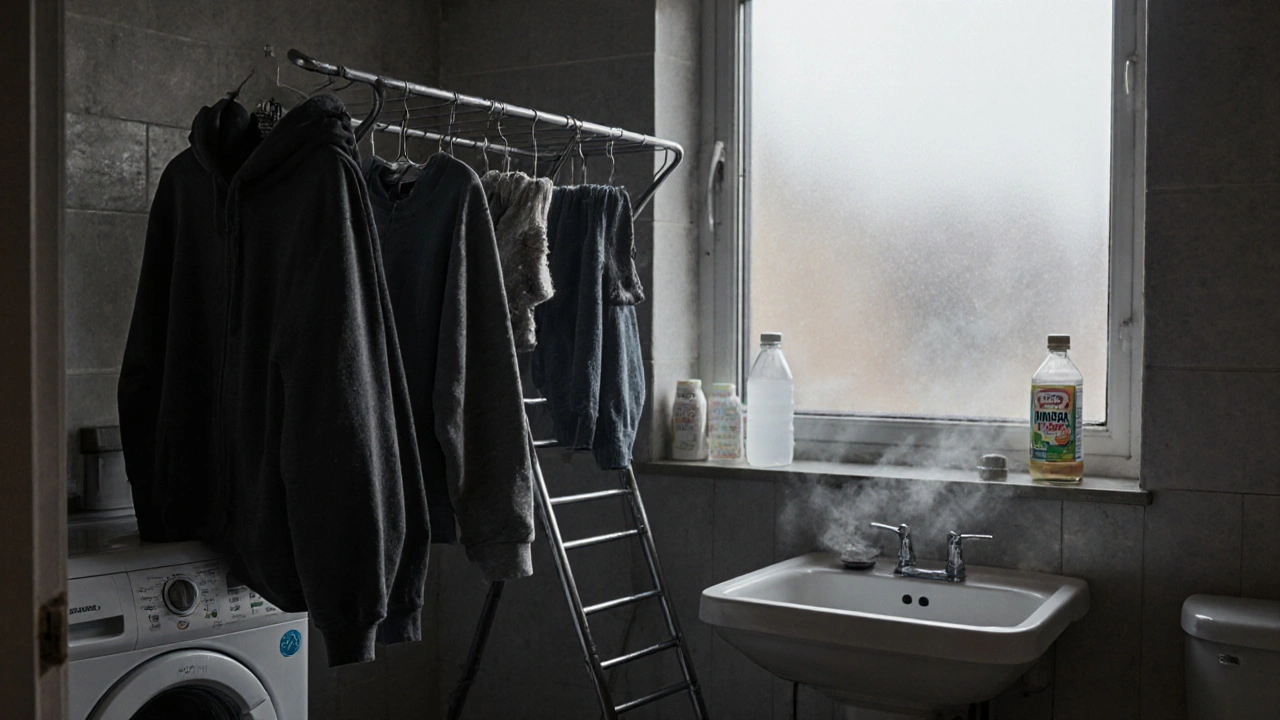Drying Clothes UK: How to Dry Laundry Efficiently in British Weather
When you’re trying to dry drying clothes UK, the everyday task of removing moisture from laundry in a climate where rain and humidity are constant. Also known as indoor line drying, it’s not just about hanging wet clothes up—it’s about avoiding mold, cutting energy bills, and keeping your room habitable. In the UK, outdoor drying is a luxury. Even on sunny days, the air stays damp, and back gardens are often too small or shared. That means most students and renters end up drying clothes inside—on radiators, over chairs, or on tension lines. But doing it wrong turns your flat into a steam room and your clothes into a mildew mess.
One big mistake? Putting everything on the radiator. It sounds smart—heat dries fast—but it actually makes your heating system work harder, spikes your energy bill, and leaves moisture in the air. That dampness sticks to walls, windows, and furniture, inviting mold. Instead, try tumble dryer costs, the hidden expense of running a machine every other day, especially if you’re on a pay-as-you-go meter. A single cycle can cost over £0.50, and if you’re washing twice a week, that’s £50 a year just on drying. Better options? Use a drying rack near a window with a fan blowing. Or hang clothes in the bathroom after a hot shower—the steam helps loosen wrinkles and the extractor fan pulls moisture out. For thicker items like jeans or towels, twist them tightly before hanging to remove extra water. No spin cycle? Use a clean towel: lay the wet item on it, roll it up like a sleeping bag, and step on it for 30 seconds. You’ll cut drying time in half.
And don’t forget laundry tips UK, the small habits that make a huge difference in damp climates. Wash less often. Air out clothes between wears. Use vinegar in the rinse cycle—it helps fabrics dry faster and reduces odor. If you’re in student housing, check if your building has a communal dryer. If it’s broken or full, talk to your landlord. Many UK tenancy agreements require landlords to provide adequate drying facilities. And if you’re sharing a flat, make a simple schedule. No one likes walking into a room that smells like a gym sock left in a sauna.
The real win? Combining smart habits with cheap tools. A £15 retractable clothes line from Amazon, mounted between two walls, can dry six loads at once. A £10 dehumidifier in the corner of your room cuts drying time and stops condensation. These aren’t luxuries—they’re necessities if you want to avoid black mold on your curtains or a landlord’s repair bill. You don’t need fancy gadgets. You just need to understand how moisture moves in British homes and how to outsmart it.
Below, you’ll find real student-tested methods for drying laundry without wrecking your budget, your health, or your flat. From how to dry socks in 20 minutes to why you should never hang wet towels on your radiator, these guides cut through the noise and give you what actually works in UK weather—no fluff, no theory, just what to do tomorrow morning.
Laundry Essentials for UK Students: Washing, Drying, and Ironing Made Simple
Published on Oct 23
0 Comments
Learn the essential laundry skills every UK student needs: washing, drying, and ironing clothes without shrinking, staining, or smelling bad. Simple tips for saving time and money.
